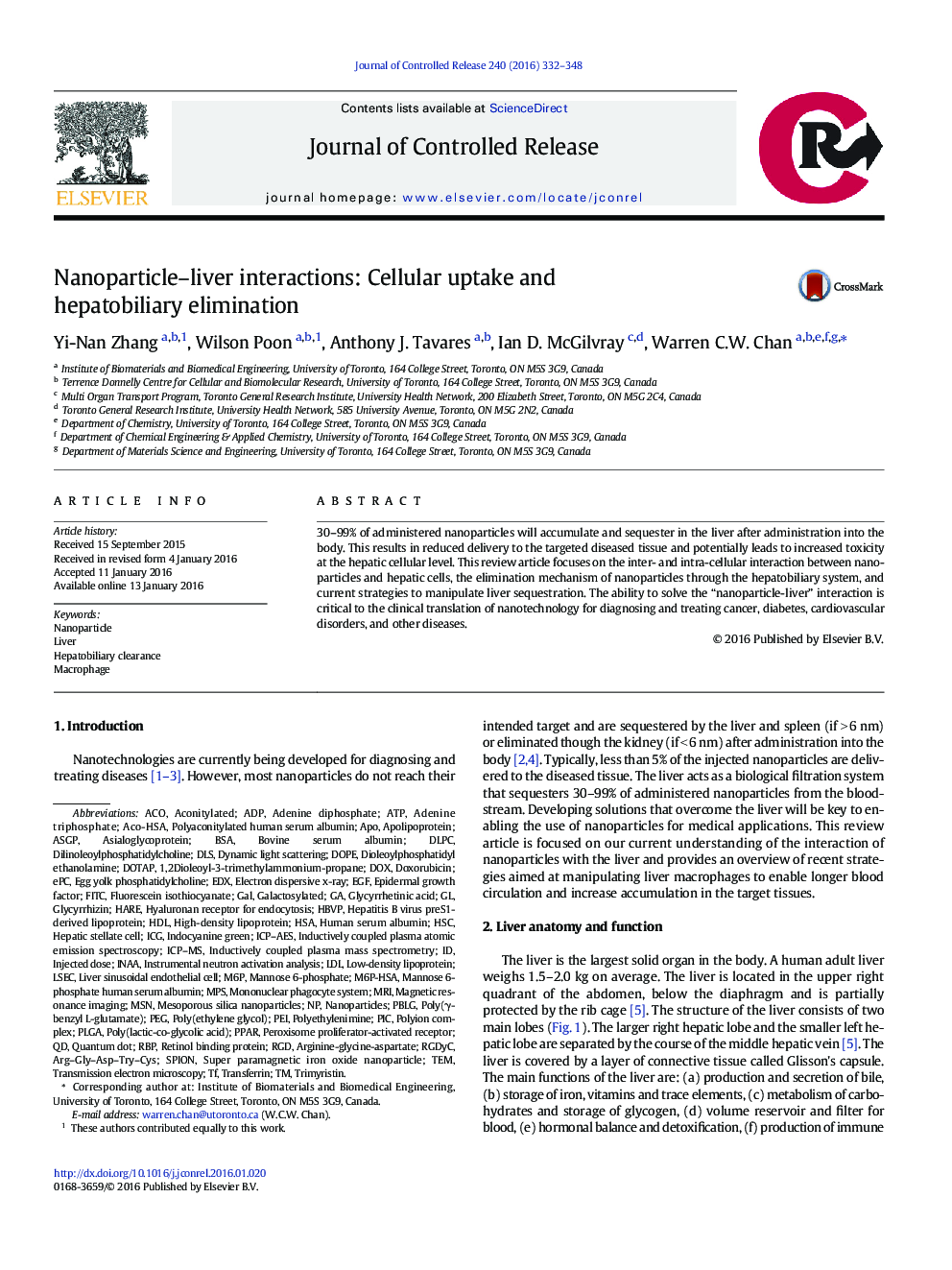| Article ID | Journal | Published Year | Pages | File Type |
|---|---|---|---|---|
| 5433988 | Journal of Controlled Release | 2016 | 17 Pages |
30-99% of administered nanoparticles will accumulate and sequester in the liver after administration into the body. This results in reduced delivery to the targeted diseased tissue and potentially leads to increased toxicity at the hepatic cellular level. This review article focuses on the inter- and intra-cellular interaction between nanoparticles and hepatic cells, the elimination mechanism of nanoparticles through the hepatobiliary system, and current strategies to manipulate liver sequestration. The ability to solve the “nanoparticle-liver” interaction is critical to the clinical translation of nanotechnology for diagnosing and treating cancer, diabetes, cardiovascular disorders, and other diseases.
Graphical abstractDownload high-res image (330KB)Download full-size image
